Hydrolyzed Protein Formula
39 hours of research 4 minute read

If you have a little one with a sensitive tummy, you know how challenging it can be to find the right formula that keeps them happy and comfortable. Today, we're diving into the world of "Hydrolyzed Protein Formula" – a superhero in the realm of infant nutrition. This incredible formula is specially designed to cater to babies with food allergies and sensitivities. In this blog, we'll walk you through the concept of how hydrolyzed protein formulas are made and unravel the differences between the extensively hydrolyzed and partially hydrolyzed variants.
Understanding Hydrolyzed Protein formula
Hydrolyzed Protein Formula is a powerful ally in the world of infant nutrition, crafted to cater to little ones with sensitive tummies, food allergies, or intolerances. This specialized baby formula stands apart from regular infant formulas, thanks to a remarkable process known as "hydrolysis." Through this magical transformation, proteins are broken down into smaller fragments, called peptides, making them gentle and easily digestible for delicate digestive systems.
Decoding the science of hydrolysis: A puzzle of proteins
Now, you might be wondering how this magic transformation happens. Well, it's all thanks to the process of "hydrolysis." Imagine a puzzle with numerous intricate pieces – hydrolysis works like a skilled solver, breaking down the proteins into manageable fragments called peptides. Let us now explore the science of hydrolysis.
| Understanding molecules |
To grasp the concept of hydrolysis, we first need to understand molecules. Molecules are made up of atoms, and they can be large and complex, like a jigsaw puzzle with numerous pieces connected by chemical bonds. |
| Introducing proteins |
Proteins are a type of molecule essential for our bodies. They play a crucial role in various functions, such as building and repairing tissues, supporting the immune system, and acting as enzymes to catalyze biochemical reactions. |
| The power of peptide bonds |
Proteins are composed of long chains of smaller units called amino acids, linked together by strong chemical bonds called peptide bonds. These peptide bonds act like the hooks that connect the beads in our jigsaw puzzle. |
| The need for hydrolysis |
For some individuals, particularly babies with sensitive tummies or food allergies, large intact proteins can be difficult to digest. This is where hydrolysis comes to the rescue! |
| What is Hydrolysis? |
Hydrolysis is a chemical reaction involving water (H2O) that breaks the peptide bonds between amino acids in a protein chain. The process uses water to split the proteins into smaller fragments, making digestion much more manageable. |
| What is Hydrolysis? |
Hydrolysis is a chemical reaction involving water (H2O) that breaks the peptide bonds between amino acids in a protein chain. The process uses water to split the proteins into smaller fragments, making digestion much more manageable. |
| Enzymes as catalysts |
To carry out hydrolysis efficiently, special molecules called enzymes act as catalysts. These enzymes are like skilled artisans that specifically target the peptide bonds in the protein chain, facilitating the breakage. |
| Breaking the bonds |
As water molecules interact with the protein chain under the influence of enzymes, they insert themselves between the amino acids. This insertion causes the peptide bonds to weaken and eventually break. Imagine the enzyme as a pair of scissors snipping away at the peptide bonds, like a puzzle being taken apart. |
| The result of hydrolysis |
Once the peptide bonds are broken, the large protein molecule is transformed into smaller peptide fragments. These fragments are like pieces of a puzzle that have been disconnected, much easier for our digestive system to handle. |
| Gentle and effective digestion |
The end result of hydrolysis is a Hydrolyzed Protein Formula, where the proteins have been broken down into these smaller, more digestible peptides. These formulas are gentle on sensitive tummies and can reduce the risk of triggering allergic reactions in babies with food allergies or intolerances. |
| Supporting little tummies |
Hydrolysis empowers us to provide specialized nutrition to infants with unique dietary needs. |
Extensively Hydrolyzed vs. Partially Hydrolyzed
Now that we know about hydrolyzed protein formulas, let's explore the two main types - extensively hydrolyzed and partially hydrolyzed.
1. Extensively Hydrolyzed formula:
Extensively hydrolyzed formula is the superhero of hypoallergenic options. In this type of formula, the proteins undergo an intensive process of hydrolysis, where the large protein molecules are broken down into tiny fragments called peptides. These peptides are almost unrecognizable to the immune system, drastically reducing the risk of triggering allergic reactions.
Benefits of Extensively Hydrolyzed formula:
- Severe Food Allergies: This formula is highly recommended for babies with severe food allergies, where even the tiniest trace of certain proteins can cause significant reactions.
- Multiple Food Intolerances: For infants with multiple food intolerances, extensively hydrolyzed formula provides a safe and gentle source of nutrition, devoid of allergenic triggers.
- Eczema Management: In some cases, eczema may be linked to underlying food allergies. Using an extensively hydrolyzed formula can help manage eczema symptoms by eliminating potential allergens.
2. Partially Hydrolyzed formula:
Partially hydrolyzed formula, or "HA" formula, is a more gentle option for babies with mild to moderate sensitivities or those at a lower risk of severe allergic reactions. The partially broken-down proteins offer a safe and effective alternative to regular infant formulas while still providing the essential nutrition needed for healthy growth and development.
Benefits of Partially Hydrolyzed formula:
- Mild to Moderate Sensitivities: Partially hydrolyzed formula is suitable for babies with mild to moderate food sensitivities or intolerances. It provides a middle ground between regular formulas and extensively hydrolyzed formulas.
- Family history of allergies: If there is a family history of allergies, using partially hydrolyzed formula may be a proactive measure to reduce the risk of developing allergies in the baby.
- Transition to formula feeding: For infants transitioning from breast milk to formula, partially hydrolyzed formula can be a gentler introduction to formula feeding.
Here are some of the hydrolyzed formulas that Organic Life Start offers:
1. HiPP HA Germany Hydrolyzed
HiPP HA German is a hypoallergenic formula designed for babies with a higher risk of allergies or food intolerances.
2. HiPP Dutch HA Hydrolyzed
This formula is very similar to the popular German version of HIPP HA, with the added benefit of slightly higher protein amounts to support baby's growth and development.
3. HiPP Comfort Milk Formula
The whey proteins in HiPP Comfort are hydrolyzed for better digestion. It also has natural alternative carbohydrates that make it naturally thick and creamy, making it a favorite taste among babies.
4. HiPP UK Comfort Baby Milk Formula
The whey proteins in HiPP Comfort are hydrolyzed for better digestion. It also has natural alternative carbohydrates that make it naturally thick and creamy, making it a favorite taste among babies.
5. Aptamil Pepti
Aptamil Pepti is a hypoallergenic formula designed for babies with severe food allergies or multiple intolerances. It contains 90% hydrolyzed proteins, which means the proteins are broken down into tiny fragments.
Note: The definitions of the terms partially hydrolyzed and extensively hydrolyzed vary by country, and there is no global standard for the degree to which milk proteins are hydrolyzed in context of these labels.
Comparison with Regular Infant formula
| Hydrolyzed Formulas | Regular Infant Formulas |
|---|---|
|
Protein Composition: Hydrolyzed formulas undergo a process called hydrolysis, breaking down proteins into smaller fragments, such as peptides and amino acids. These smaller protein components are easier for a baby's delicate digestive system to handle. |
Protein Composition: Standard infant formulas contain intact proteins, similar to those found in breast milk or cow's milk. These proteins are not broken down through hydrolysis. |
|
Digestion: Due to the pre-digested proteins, hydrolyzed formulas are generally easier to digest compared to regular infant formulas with intact proteins. This ease of digestion reduces the risk of gastrointestinal discomfort, gas, and other digestive issues. |
Digestion: Infants with sensitive tummies or food allergies may find it challenging to digest intact proteins. Some babies may experience allergic reactions or gastrointestinal issues, like colic, when fed with regular formulas. |
Why hydrolyzed formulas are preferred for babies with specific dietary requirements?
- Reduced Allergenic Potential: Hydrolyzed formulas, especially extensively hydrolyzed ones, offer a significantly reduced allergenic potential. The hydrolysis process breaks down the proteins into fragments that are less likely to trigger allergic reactions in babies with food allergies or intolerances.
- Gentle on Sensitive Tummies: Babies with sensitive digestive systems, whether due to allergies, intolerances, or other issues, may experience discomfort when fed with regular formulas. Hydrolyzed formulas provide a gentler option, easing digestion and reducing the risk of gastrointestinal problems.
- Minimizing Allergic Sensitization: Early exposure to hydrolyzed formulas may help reduce the risk of developing allergies in high-risk infants. By providing a hypoallergenic option, these formulas offer a preventive measure against allergic sensitization.
In summary, hydrolyzed formulas stand out as the preferred choice for babies with specific dietary requirements, particularly those with food allergies, intolerances, or sensitive tummies. Their unique protein composition and ease of digestion make them a gentle and effective solution to support the growth and well-being of these little ones. By providing essential nutrients in a form that is less likely to cause allergic reactions or digestive discomfort, hydrolyzed formulas play a vital role in nurturing the health and happiness of babies with unique nutritional needs.
Consulting Your Pediatrician
Consulting with a pediatrician before choosing a hydrolyzed formula for your baby is of utmost importance and should be the first step in the decision-making process. Pediatricians are trained medical professionals with expertise in infant nutrition and child health, making them invaluable resources in ensuring your baby receives the best possible care.
Here's why consulting your pediatrician is crucial when considering a hydrolyzed formula:
- Personalized Assessment
- Expert Guidance
- Monitoring and Adjustment
- Preventing Nutritional Gaps
- Safe Transitioning
- Addressing Parental Concerns
Remember, a pediatrician's guidance extends beyond just selecting a formula. They are dedicated to your baby's overall health and well-being, providing support, advice, and solutions to any challenges that may arise during their early development. Consulting with a pediatrician empowers parents to make informed decisions, setting the foundation for a healthy and happy start in their baby's life.
So, before making any changes to your baby's feeding regimen, reach out to your pediatrician. They will be your trusted partner in ensuring that your baby receives the most suitable hydrolyzed formula to support their individual needs and ensure their growth and happiness. Together, you can embark on a journey of nurturing your little one's health, guiding them towards a bright and thriving future.
Hydrolyzed Baby Formula
"Hydrolyzed Protein Formula" proves to be a valuable and essential option in the realm of infant nutrition. These specialized formulas cater to babies with sensitive tummies, food allergies, and intolerances, offering a gentle and effective solution to their unique dietary needs.
The benefits of hydrolyzed protein formulas go beyond just easier digestion. They provide optimal nutrient absorption, promoting healthy growth and development in our little ones. Moreover, research suggests that these formulas might even have immune-modulating effects, bolstering our babies' immune systems for a healthier start in life.
When exploring hydrolyzed formulas, it's essential to understand the various types available in the market. These formulas often feature hydrolyzed milk protein, hydrolyzed vegetable protein, hydrolyzed wheat protein, hydrolyzed rice protein, hydrolyzed oats, hydrolyzed gelatin, hydrolyzed whey, and hydrolyzed milk. Each of these hydrolyzed proteins serves a unique purpose, and understanding their distinctions can help in selecting the most suitable formula for your baby's needs. For instance, hydrolyzed whey is derived from milk and is often well-tolerated by infants with dairy sensitivities. Hydrolyzed vegetable protein, on the other hand, is derived from plant sources, offering an alternative for those with allergies to animal-based proteins. While hydrolyzed wheat protein, hydrolyzed rice protein, and hydrolyzed oats are excellent options for babies who may be intolerant to gluten or have sensitivity to specific grains.
However, the importance of consulting with a pediatrician cannot be stressed enough. Before making any changes to your baby's feeding regimen, seeking guidance from a medical professional is crucial. They can recommend the most suitable hydrolyzed formula based on your baby's individual needs and ensure their well-being.
3 Most Popular Hydrolyzed Formulas
Organic Life Start is committed to providing accurate, reliable, and trustworthy information to parents and caregivers. We carefully choose credible sources and follow a meticulous fact-checking process to uphold the highest standards in infant nutrition and parenting advice. To learn more about our dedication to accuracy, please explore our editorial guidelines.
Link To Sources


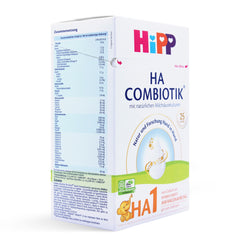
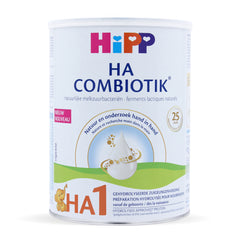
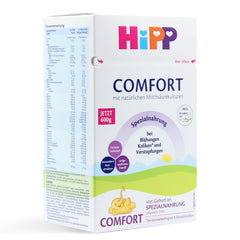
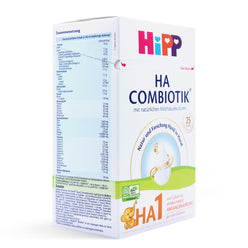
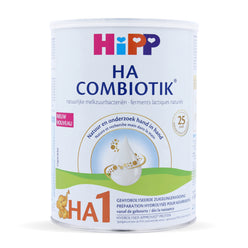
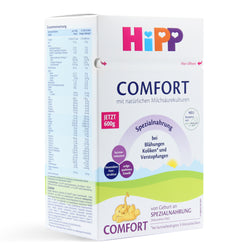
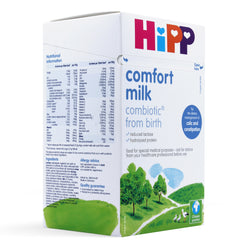
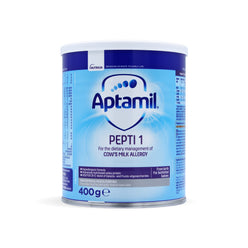
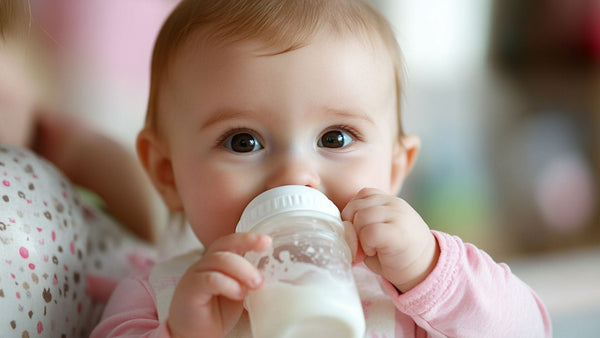





Emory H. -
A hydrolyzed formula from a U.S. brand that I gave to my baby girl, Octavia, helped a little, but it was never completely right for her sensitive tummy. My research led me to the European option HiPP Comfort, which has received rave reviews from many parents. I conferred with our pediatrician, and we collectively resolved to proceed with it. The distinction has been remarkable. Octavia’s digestion has significantly improved—reduced gas, absence of post-feeding distress, and she appears genuinely at ease. The formula mixes smoothly and has such a mild smell compared to what we used before. We’re both so relieved and impressed — HiPP Comfort has been a truly remarkable find for us.
Mabel Dover -
October 16, 2025
I didn’t really understand how much the type of protein in a formula could affect digestion until I came across hydrolyzed options. As a mom, I used to assume that most formulas worked the same, but when my baby struggled with gas and discomfort, I quickly learned otherwise. Finding out that hydrolyzed protein formulas are made to be gentler on little tummies feels like such a relief.
Looking back, I wish I had discovered this sooner—it could have spared us so many restless nights and worries. What I love here is that the guide explains things in a clear, approachable way, which makes it easier to feel confident in the choices I’m making. It reminds me that being informed isn’t just helpful; it’s empowering as a parent.
Dakota -
October 09, 2025
Indeed! It can be confusing with all the mixed advice out there. For us, switching to a hydrolyzed formula like HiPP HA actually made a noticeable difference in my baby’s comfort and digestion. She had frequent gas and seemed fussy after regular formula, but the hydrolyzed protein option eased that within a week. These formulas aren’t just for allergy concerns; they can really help with sensitive tummies too. Every baby reacts differently, though, so it might take a little trial and error. Still, I’d say it’s worth trying if you’re dealing with colic or constant tummy troubles.